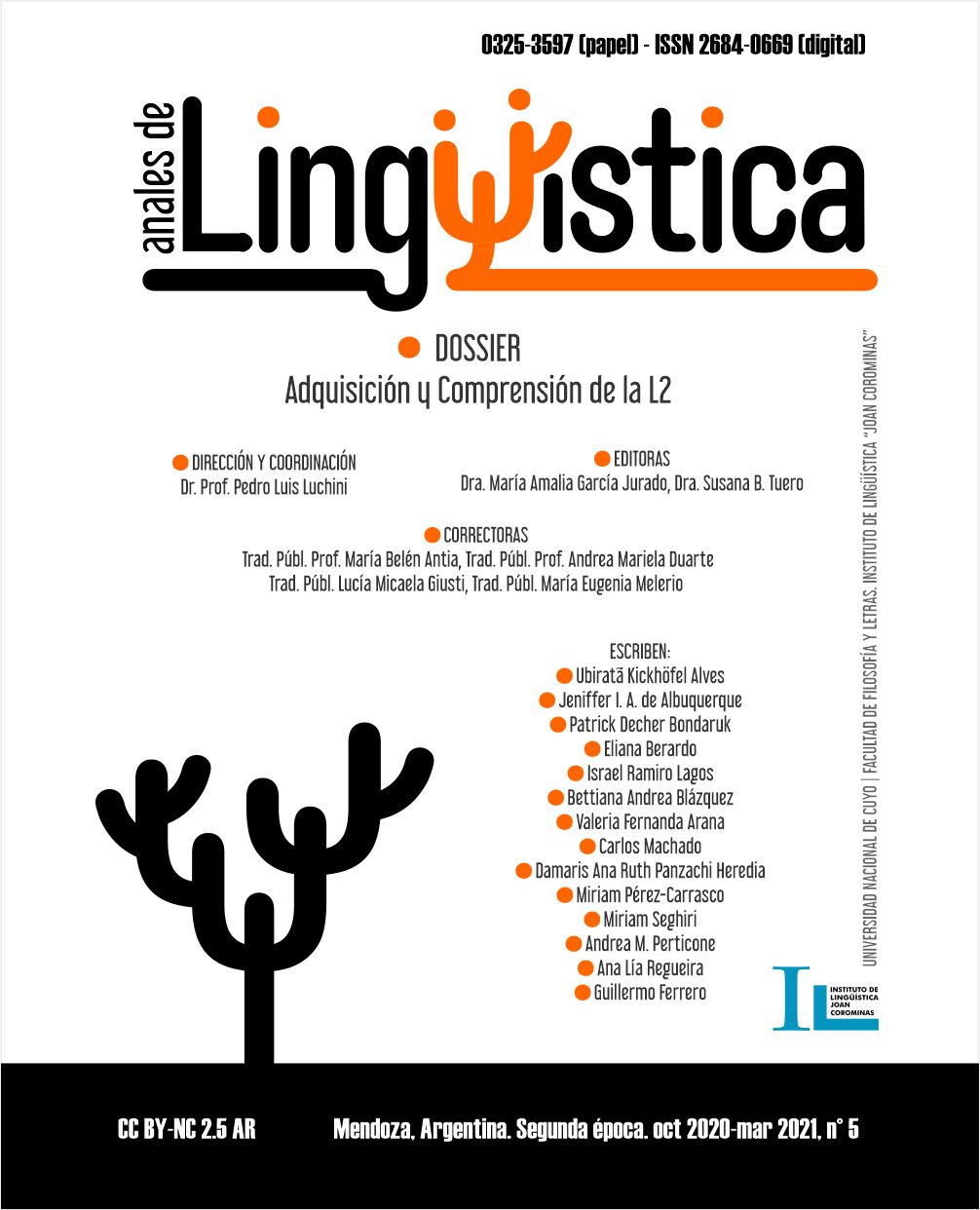Efectos de la repetición de tareas: redistribuir los recursos atencionales para optimizar la producción
Keywords:
task repetition, attentional resources, speaking, narrationAbstract
In the field of teaching English as a foreign language there has been a growing tendency towards adopting communicative teaching methods. Likewise, the current state curricula in Argentina propose using a task-based approach to teaching English. In this context, there is an increasing need for answers as regards the potential benefits of those methods on the process of language acquisition. There has been much research in the last few years on the effects of task repetition on the linguistic development of students of foreign languages, especially taking into account that there are complex cognitive processes involved in oral and written production.
The objective of this study is to analyze the effects of the repetition of oral narrative tasks on the distribution of attentional resources among the different procedures involved in speaking, using Levelt’s (2012) blueprint of the speaker as a reference, and to relate this re-distribution to changes in the quality of the participants’ performance. A quantitative analysis of the participants’ productions was carried out to measure fluency, precision, lexical complexity and syntactic complexity. After each task, an interview was conducted with each participant to analyze their performance in order to identify the percentage of attention allocated to each production process. The results are not conclusive, but they provide data consistent with previous studies.
References
Foster, P., Tonkyn, A. y Wigglesworth, G. (2000). Measuring spoken discourse: A unit for all reasons. Applied Linguistics, 21 (3), 354-375.
Fukuta, J. (2016). Effects of task repetition on learners’ attention orientation in L2 oral production. Language Teaching Research, 20 (3), 321-340. https://doi.org/10.1177/1362168815570142
Gass, S. (2017). Input, Interaction, and the Second Language Learner (2.a ed.). Nueva York: Routledge.
Kormos, J. y Dénes, M. (2004). Exploring measures and perceptions of fluency in the speech of second language learners. System, 32 (2), 145-164. https://doi.org/10.1016/j.system.2004.01.001
Levelt, W. J. M. (2012). Producing spoken language: a blueprint of the speaker. En C. M. Brown y P. Hagoort (Eds.). The Neurocognition of Language (pp. 82-122). Oxford: Oxford University Press. https://doi.org/10.1093/acprof:oso/9780198507932.003.0004
Nazara, S. (2011). Students’ Perception on EFL Speaking Skill Development. JET (Journal of English Teaching), 1 (1), 28. https://doi.org/10.33541/jet.v1i1.50
Tavakoli, P. y Foster, P. (2008). Task design and second language performance: The effect of narrative type on learner output. Language Learning, 58 (2), 439-473. https://doi.org/10.1111/j.1467-9922.2008.00446.x
Yu, Y. (2015). The Effect of Task Frequency on EFL Speaking Ability Acquisition. Theory and Practice in Language Studies, 5 (2), 392. https://doi.org/10.17507/tpls.0502.21
Downloads
Published
How to Cite
Issue
Section
License
Copyright (c) 2021 Anales de Lingüística
Esta obra está bajo una Licencia Creative Commons Atribución 2.5 Argentina.
Los/as autores/as que publican en esta revista están de acuerdo con los siguientes términos:
1. Los/as autores conservan los derechos de autor y garantizan a la revista el derecho de ser la primera publicación del trabajo bajo una licecncia Creative Commons Atribución 2.5 Argentina (CC BY 2.5 AR) . Por esto pueden compartir el trabajo con la referencia explícita de la publicación original en esta revista.
2. Anales de lingüística permite y anima a los autores a difundir la publicación realizada electrónicamente, a través de su enlace y/o de la versión postprint del archivo descargado de forma independiente.
3. Usted es libre de:
Compartir — copiar y redistribuir el material en cualquier medio o formato
Adaptar — remezclar, transformar y construir a partir del material para cualquier propósito, incluso comercialmente.












